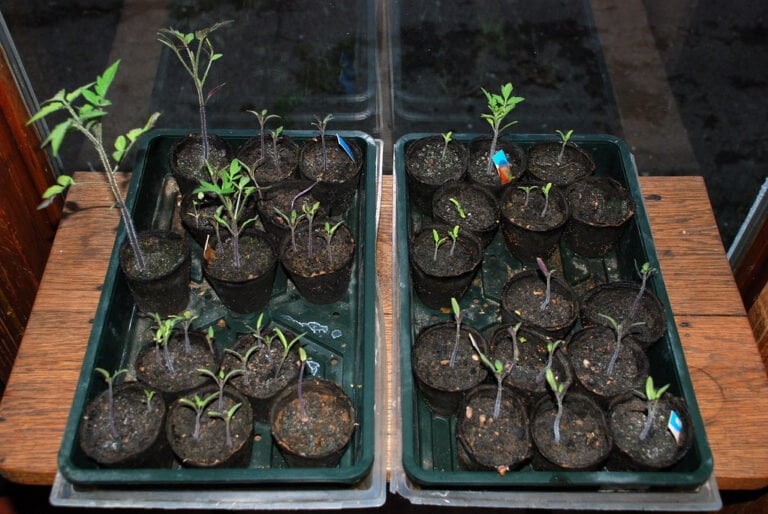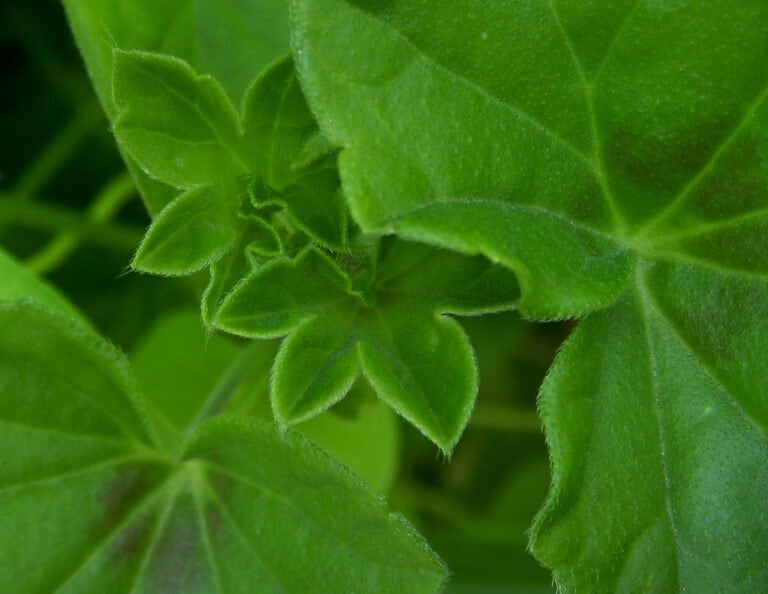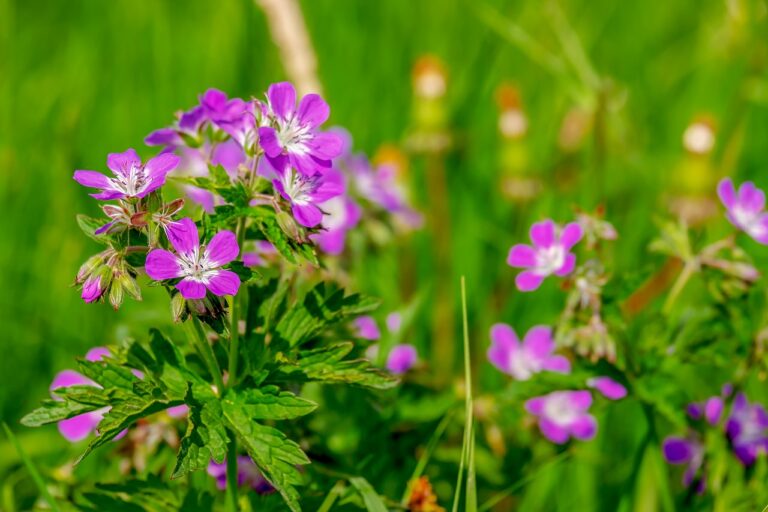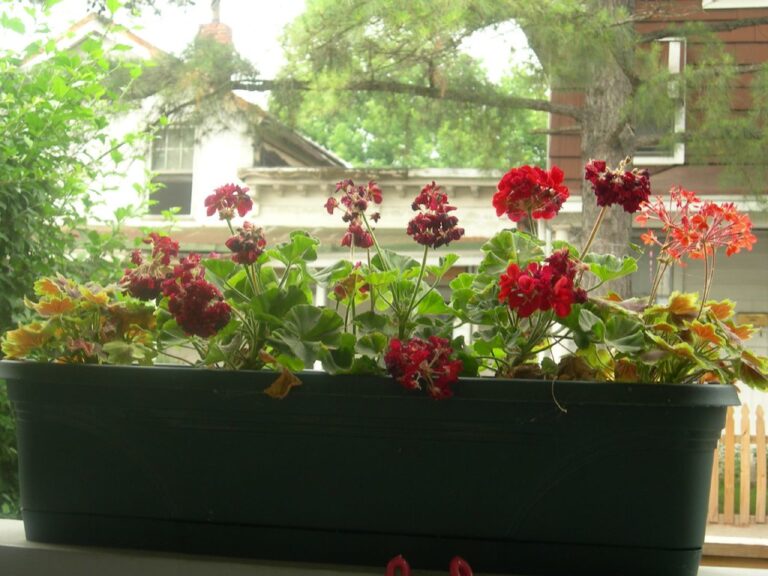Guide to Growing Broccoli in a Pot
Are you ready to embark on a journey of growing your very own broccoli in a pot? Look no further, because this guide is here to help you every step of the way. From selecting the perfect pot to harvesting your delicious broccoli, you'll gain the knowledge and practical tips you need to succeed. Get your green thumbs ready and let's dive into the world of pot-grown broccoli!
Choosing the Right Pot
To choose the right pot for growing broccoli, you should consider its size, drainage, and material. When it comes to size, opt for a pot that is at least 12 inches deep and wide to accommodate the broccoli's extensive root system. Good drainage is crucial for preventing waterlogged soil, which can lead to root rot. Look for pots with drainage holes or consider adding a layer of gravel at the bottom to improve drainage. As for material, clay or terracotta pots are ideal as they provide good airflow and help regulate moisture levels. Avoid plastic pots as they can retain too much moisture. By selecting a pot that meets these criteria, you will create the ideal environment for your broccoli to thrive.
Selecting the Right Soil
Now let's move on to selecting the right soil for growing broccoli in a pot. The success of your broccoli plants heavily relies on the quality of the soil you choose. When it comes to selecting soil for broccoli, you want to prioritize nutrient-rich options that promote healthy growth. Look for a potting mix that is well-draining and has a good balance of organic matter. A mix that contains compost or aged manure will provide the necessary nutrients for your plants. Additionally, a pH level of around 6.0 to 7.0 is ideal for broccoli. Remember to avoid using garden soil or heavy clay soil, as they can impede drainage and hinder the growth of your broccoli. By selecting the right soil, you are setting your broccoli plants up for success and ensuring a bountiful harvest.
Picking the Best Broccoli Variety
When selecting the best broccoli variety for growing in a pot, consider the specific characteristics and requirements that will suit your gardening needs. You want a variety that will thrive in a confined space, yet still produce a bountiful harvest. One option to consider is the 'DeCicco' variety. This compact plant grows to around 24 inches tall and produces small to medium-sized heads, perfect for containers. Another great choice is the 'Green Goliath' variety. It is known for its large, dense heads and vigorous growth. If you prefer a sweeter taste, the 'Arcadia' variety is an excellent option. It produces tender, flavorful heads that are perfect for steaming or roasting. Remember to choose a variety that matches your preferences and the available space in your pot.
Planting Broccoli Seeds
To begin planting your broccoli seeds in a pot, gather all the necessary materials and prepare your potting soil. First, you will need a pot with drainage holes to ensure proper water flow. Choose a pot that is at least 12 inches deep to accommodate the growing broccoli roots. Next, gather potting soil that is rich in organic matter and well-draining. Fill the pot with the soil, leaving about an inch of space from the top. Now, it's time to sow the broccoli seeds. Plant the seeds about half an inch deep and space them about 2 inches apart. Gently water the soil to moisten it, but be careful not to overwater. Place the pot in a sunny location, and soon you will see your broccoli seeds sprout and grow into healthy plants.
Providing Adequate Sunlight
To ensure the healthy growth of your broccoli plants, place the pot in a sunny location that receives at least six hours of direct sunlight daily. Adequate sunlight is crucial for the proper development of your broccoli plants. When selecting a spot for your pot, look for an area that gets ample sunlight throughout the day. Ideally, this would be a location with southern or western exposure. Make sure there are no tall trees or structures blocking the sunlight. Broccoli plants thrive in full sun, which provides the energy they need for photosynthesis and the production of healthy, vibrant foliage. Lack of sunlight can result in weak, leggy plants and poor-quality broccoli heads. So, find a sunny spot and watch your broccoli plants flourish under the warm rays of the sun.
Watering Broccoli Plants
To ensure the proper growth and health of your broccoli plants in a pot, it is important that you water them regularly and consistently. Broccoli plants require a consistent moisture level to thrive, as they have shallow roots that can dry out quickly. Watering your broccoli plants deeply is crucial, as it encourages the roots to grow deeper into the soil, making them more resilient to drought and heat. A good rule of thumb is to water your plants whenever the top inch of soil feels dry to the touch. However, be careful not to overwater, as this can lead to root rot and other fungal diseases. It is best to water your broccoli plants in the morning or evening to minimize evaporation and allow the plants to absorb the water more efficiently. Regular monitoring of soil moisture levels and adjusting your watering schedule accordingly will help ensure the success of your broccoli plants.
Fertilizing Broccoli in a Pot
For optimal growth and nutrient uptake, regularly fertilize your broccoli plants in a pot. Fertilizing your broccoli in a pot is essential to ensure that they receive the necessary nutrients they need to thrive. Since the plants are confined to a limited space, they rely heavily on the nutrients provided by the soil. Start by using a balanced, slow-release fertilizer when planting your broccoli. This will provide a steady supply of nutrients over time. As the plants grow, continue to fertilize every three to four weeks with a balanced liquid fertilizer. Be sure to follow the instructions on the fertilizer package to avoid overfertilization, which can damage the plants. Regular fertilization will promote healthy growth, improve yields, and ensure delicious, nutrient-rich broccoli for your enjoyment.
Controlling Pests and Diseases
You can effectively control pests and diseases when growing broccoli in a pot by implementing preventive measures and regularly monitoring your plants. One of the most important steps is to keep your broccoli plants healthy and strong, as they are less likely to be attacked by pests or succumb to diseases. Make sure to provide them with proper sunlight, water, and nutrient-rich soil. Additionally, practicing good hygiene is crucial. Remove any dead or decaying leaves, as they can attract pests or harbor diseases. Inspect your plants regularly for signs of pests, such as aphids or caterpillars, and diseases like powdery mildew or black rot. If you spot any issues, take immediate action by using organic pesticides or fungicides, or by manually removing the pests. By being proactive and vigilant, you can ensure that your broccoli plants thrive and produce healthy, delicious florets.
Harvesting Broccoli
Once your broccoli plants have reached maturity and developed tight, compact heads, it is important to know how to properly harvest them. Harvesting broccoli at the right time ensures its optimal taste and nutritional value. To begin, identify the main head that forms in the center of the plant. It should be firm and green, with tightly closed florets. Using a sharp knife or garden shears, cut the head off at the base, leaving about 5 inches of stalk attached. This allows for potential side shoots to develop, providing additional harvests. After harvesting the main head, keep an eye out for smaller side shoots that will continue to grow. Harvest these shoots while they are still small and tightly packed. Remember, fresh broccoli tastes best, so serve it immediately or store it in the refrigerator for a few days. Enjoy your homegrown, nutritious broccoli!
Tips for Success
To ensure successful growth of your broccoli in a pot, follow these helpful tips. First, choose a pot that is at least 12 inches deep and wide enough for the broccoli plant to spread its roots. Ensure the pot has drainage holes to prevent waterlogging. Next, use a well-draining potting mix enriched with compost or organic matter to provide the necessary nutrients. Place the pot in a spot that receives at least six hours of sunlight daily. Water the plant regularly, keeping the soil moist but not waterlogged. Fertilize the plant every two weeks with a balanced fertilizer. Monitor for pests and diseases, and take necessary measures to control them. Finally, harvest the broccoli when the heads are firm and tight. By following these tips, you can enjoy a bountiful harvest of delicious homegrown broccoli.
Conclusion
In conclusion, growing broccoli in a pot is a feasible and rewarding endeavor. By selecting the right pot, soil, and variety, and providing adequate sunlight and fertilizer, you can successfully cultivate this nutritious vegetable at home. Additionally, practicing pest and disease control measures will ensure healthy growth. When the time comes, harvesting your homegrown broccoli will bring a sense of accomplishment and satisfaction. Follow these practical tips for a successful broccoli-growing experience. Happy gardening!






